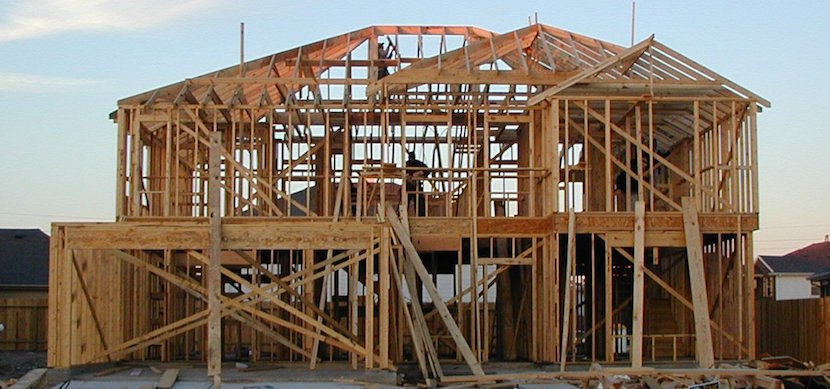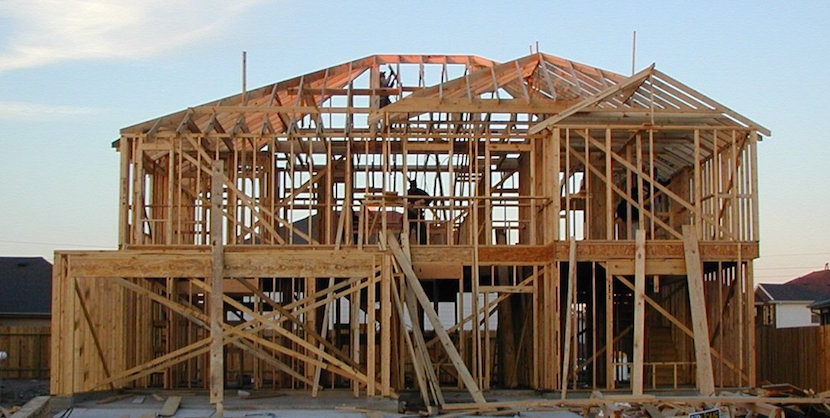This content is brought to you by Brightrock, provider of the first-ever life insurance that changes as your life changes.
Buying a home is a lot easier and cheaper than building one from scratch. But the rewards of knowing you’re living in a home-made home sweet home will make it well worth the extra toil and trouble.
By *Maya Fisher-French
An acquaintance who is about to start building her own home asked if she could pop round to chat about our building experience. As we are about to celebrate the first anniversary of moving into our new home, we have the privilege of hindsight. She she asked me to share the lessons learnt, what to avoid and what we did right. Here’s my advice.
Goedkoop is duurkoop
It’s worth paying for good people and good service because it saves you money and stress in the long run. When you start building, money runs out fast and price becomes an obsession, making it harder to focus on the long term costs of that short-term decision.
Our bathrooms vs kitchen experience is a great example. We used a bathroom accessory specialist, buying the bottom range of a quality brand.
The service and advice were excellent, but it was the after sales service that really paid dividends. When our toilet starting playing up, a repairman was sent by the supplier within 24 hours.
Our bathroom specialist has such a good relationship with her suppliers, that they jump when she calls. If we had bought our goods from a discount warehouse, we would have been on our own – and the prices were not much less. For the same price we could have bought a fancier range of a cheaper product which did not offer the same after sales service.
But we made a mistake in our choice of kitchen provider. We went on price, and although he did a good job it has been impossible to get him to return to the site to do basic repairs. We had to call in another cabinet maker at additional expense.
Find people who have pride in their work and value their reputation. Ask your builder who they recommend. They know the people in the trade and usually see their finished product.
If you are using a project manager, don’t think you are saving money by not using his subcontractors. He has a lot more pull with them than you do when it comes to recourse. They rely on him for their next job.
Wait six months to do your snag list
At the end of a build there is always a snag list – those things you are not entirely happy with. What we found six months after moving in, is that the house takes time to show the faults. It is only then that you start to notice where corners may have been cut or work not properly finished.
Then there are settlement cracks. In a perfect world where time and money are no concern, you should leave the house to dry out for months before painting. For the first year your house starts to settle down into the earth and there will be movement. This means settlement cracks. Be prepared and discuss a plan of action with your builder. What cracks are you happy to live with and which need to be repaired. How will these be costed?
Build for loadshedding
Unreliable and costly electricity is a reality, so speak to your electrician about your options. A solar- powered geyser is a no-brainer. In Cape Town, it is a requirement for a new build.
We found that solar panels to generate electricity were still too pricey. We installed conduits, so when the price of electricity soars or solar panel prices fall, we can switch. In the meantime the best option is to connect battery power into your electricity board to provide lighting during loadshedding. A gas hob is also essential. You can cook dinner or make a cup of tea when the lights go out. Put in a fireplace to keep the heating going during cold winter evenings.
Best value for money
Our double glazing has been the best investment of all our “luxuries”. As we enter our third month of winter, we are yet to turn on a heater. In Cape Town double glazing is a requirement for windows above a certain size when building or renovating. It should be mandatory across the country. It is wonderful to be warm.
Prepare for overspend
No house comes in on budget and there is immense financial strain during the build. For us the most stressful part was the financing and dealing with the bank. For the first time in more than 10 years we had to take out an overdraft. I had sleepless nights, but by focusing on reducing the debt and living on a tight budget for the first year, we have already paid it off. The house will cost you more. It’s how you deal with the finances afterwards that matters.
Accept your home
The best advice I ever got was not to end up “hating” your home. We all have a vision of a perfect house, but it is impossible to achieve something that can exist only in your mind. If a window is a bit more left than you wanted, or the staircase railing not quite how you envisaged, no-one else knows and this is the house you now have. Do not strive for perfection. It will drive you mad.
The most important question my friend asked was, “was it worth it? Would you do it again?” I wouldn’t need to because I have my dream home and no desire to leave. Was the process worth it? Absolutely. We were fortunate to have a good builder and good suppliers. While it may have been cheaper to buy a house, we could never have found the home we tailor-built for our family. After a year, I still enjoy every moment in our home.
* Maya Fisher-French is a well-known personal financial journalist and the life force behind financial website MayaonMoney.co.za and City Press’s My Money My Lifestyle. Her book, Maya On Money: Implement your Money Plan, was published earlier this year.
** This article first appeared on the Change Exchange, an online platform by BrightRock, provider of the first-ever life insurance that changes as your life changes.



